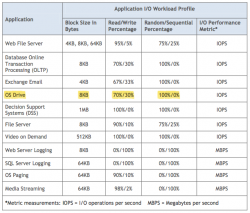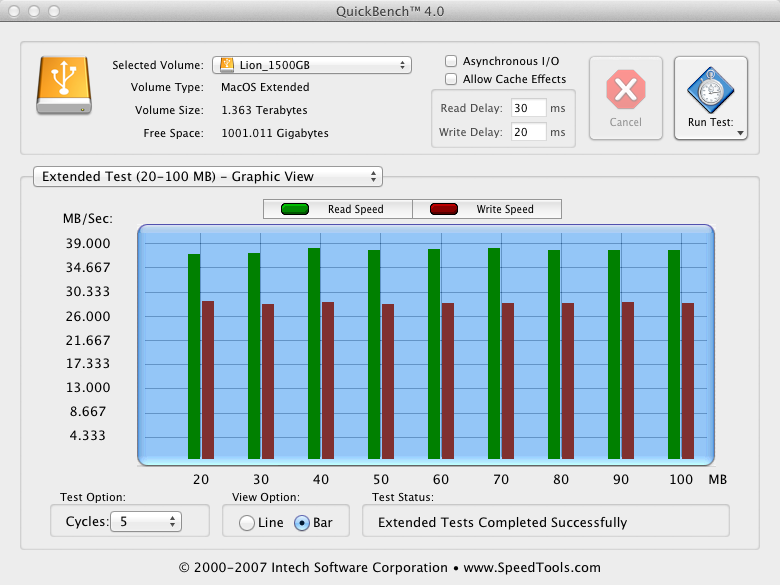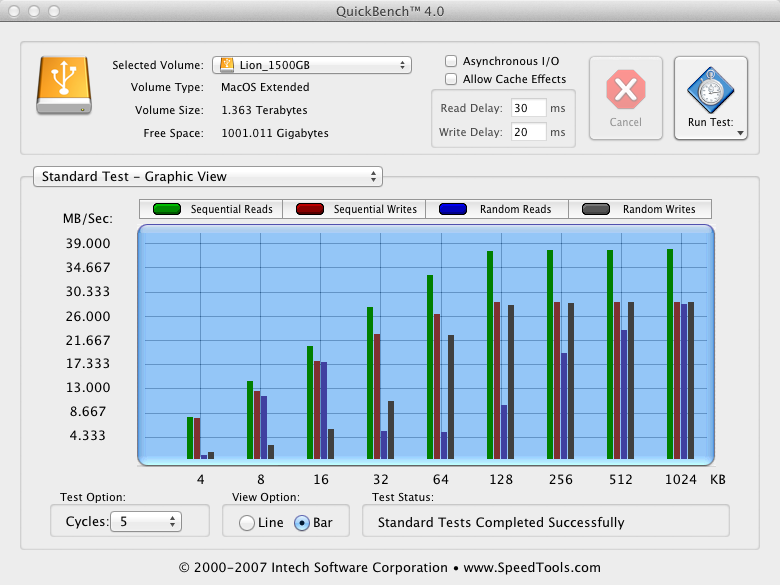Q. What are the areas where SSD drives are 50 to 100 times faster?
Q. In what areas do rotational media really come up severely lacking?
A. Yeah, at files which are 16K and smaller!
Q. What speeds can SSDs transfer 16K and smaller files at?
A. From about 30MB/s with 0.5K files to about 220MB/s with 16K files.
Q. How fast is the SATA II I have in my Mac Pro now?
A. 240MB/s - fast enough that everything the SSD is actually good at is full speed already.
Q. How fast is a fast rotational drive with files over 16K?
A. The ST3000DM001 (3TB) about 180MB/s for $125 - The ST1000DM001 (1TB) about 190MB/s for $65
Q. But those bigger file can I/O at 400 to 500MB/s on SSD, won't that make a HUGE difference?
A. No. If you spend most of your time duplicating files on the same drive then yes maybe. Your SSD will be caped at the speed of whatever other drive it's I/Oing with.
Q. Sure that's copying... what about application loading and application I/O speeds?
A. In a typical 2 hour session the difference between large file I/O times from a Super-fast SSD on SATA II vs. SATA III is maybe 10seconds (I doubt that much).
Q. So that's the ONLY difference? Really?
A. Yes.
Q. Do you think I should upgrade my SATA II to SATA III so I can save those 5 to 7 seconds per hour?
A. If it's cheap enough then sure why not. If you're shelling out for it then WTF? Of course not.
Q. OK, what are the good cheap ones to get?
A. I've never seen any. Sorry.
 Q.
Q. How come I see so many other people doing it then?
A. They're either silly in the head or they're dealing with an SSD RAID - where SATA III will actually be worth spending the money for.






